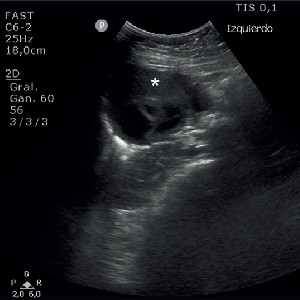Esophageal manometry: a valuable tool for the comprehensive management of COVID-19-related hypoxic respiratory failure

Submitted: 3 March 2023
Accepted: 11 March 2023
Published: 6 April 2023
Accepted: 11 March 2023
Abstract Views: 352
PDF: 144
Publisher's note
All claims expressed in this article are solely those of the authors and do not necessarily represent those of their affiliated organizations, or those of the publisher, the editors and the reviewers. Any product that may be evaluated in this article or claim that may be made by its manufacturer is not guaranteed or endorsed by the publisher.
All claims expressed in this article are solely those of the authors and do not necessarily represent those of their affiliated organizations, or those of the publisher, the editors and the reviewers. Any product that may be evaluated in this article or claim that may be made by its manufacturer is not guaranteed or endorsed by the publisher.
Similar Articles
- Gianmarco Russo, Moana R. Nespoli, Dario Maria Mattiacci, Dario Amore, Maurizio Ferrara, Domenico P. Santonastaso, Francesco Imperatore, Marco Rispoli, Thoracic paravertebral block vs mid-point transverse process to pleura block in thoracic surgery. Preliminary evaluation of effectiveness and safety , Acute Care Medicine Surgery and Anesthesia: Vol. 1 No. 1 (2023)
- Fara Russo, Anna Vitiello, Maria Carolina Russo, Alfonso Riccio, Camillo Candurro, COVID-19 in pregnant women: description of a possible case of COVID-19-linked HELLP-like syndrome , Acute Care Medicine Surgery and Anesthesia: Vol. 2 No. 1 (2024)
- Fara Russo, Maria Carolina Russo, Camillo Candurro, Stroke in Mycoplasma pneumoniae pneumonia: a clinical case , Acute Care Medicine Surgery and Anesthesia: Vol. 1 No. 1 (2023)
- Francesca Schettino, Francesco Coletta, Crescenzo Sala, Antonio Tomasello, Anna De Simone, Elena Santoriello, Marco Mainini, Simona Cotena, Silvia Di Bari, Romolo Villani, Serratus plane block and erector spinae plane block in the management of pain associated with rib fractures in chest trauma: a brief report from a single-center , Acute Care Medicine Surgery and Anesthesia: Vol. 1 No. 1 (2023)
- Andrea Sica, Luca Gobbi, Daniele Bellantonio, Silvia Passero, Lorenzo Viola, Efficacy of repeated pronations in patients affected by COVID-19-related acute respiratory distress syndrome: think it twice! , Acute Care Medicine Surgery and Anesthesia: Vol. 1 No. 1 (2023)
- Gianmaria Chicone, Viviana Miccichè, Rosa Gallo, Francesco Maiarota, Roberta Toto, Ciro Fittipaldi, Michele Iannuzzi, Awake intubation in a patient with morbid obesity in the emergency department: our experience , Acute Care Medicine Surgery and Anesthesia: Vol. 2 No. 1 (2024)
- Fara Russo, Maria Carolina Russo, Gerardo Riccio, Alfonso Riccio, Camillo Candurro, Wearable defibrillator use in patients with high risk of sudden cardiac death: a brief report from a single center , Acute Care Medicine Surgery and Anesthesia: Vol. 1 No. 1 (2023)
- Vincenzo Pota, Francesco Coletta, Angela Visconti, Giulia Landi, Maria Caterina Pace, Clinical data transmission in intensive care unit: what have we learned from COVID-19? , Acute Care Medicine Surgery and Anesthesia: Vol. 1 No. 1 (2023)
- Roberto Lazzari, Mariona Condom Siñol, Dealing with specialist pathology: an unusual case of ovarian hyperstimulation syndrome managed in the emergency department with point of care ultrasound , Acute Care Medicine Surgery and Anesthesia: Vol. 1 No. 1 (2023)
- Ludovica Golino, Michela Saracco, Marco Caiazzo, Gianmarco Russo, Fabrizio Fusco, Francesco Imperatore, Management of a road major trauma in a spoke hospital: a report of opioid-free anesthesia in a minimally invasive orthopedic surgery , Acute Care Medicine Surgery and Anesthesia: Vol. 1 No. 1 (2023)
You may also start an advanced similarity search for this article.

 https://doi.org/10.4081/amsa.2023.8
https://doi.org/10.4081/amsa.2023.8






